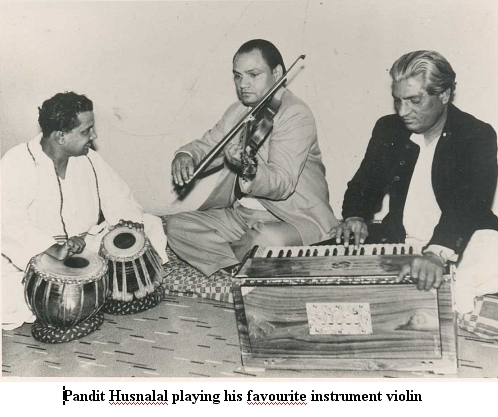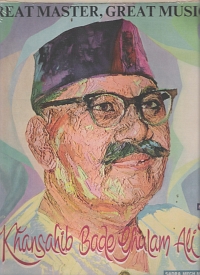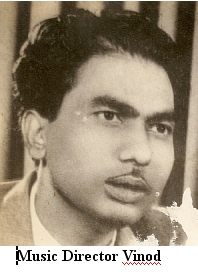Radio Pakistan Lahore versus all India radio Jalandhar
By Harjap Singh Aujla

Prior to the 1947 division of Punjab, Lahore was not only the political capital of the PUNJAB Province, it was also the educational and cultural capital of the region. This great ancient city was rapidly developing as the film and theatre centre of Punjab and North Western India. Radio has been the forerunner of television all over the world. To the city of Lahore, the opening of a radio station in 1937 with the full complement of a state of the art studio complex, was a great gift not only to the premier city of the province, but to the entire North Western area.
 There was no dearth of talent in this culturally rich city and additional talent came in hordes from neighbouring Amritsar and other districts of Punjab. In the very first year great folk singers like Shamshad Begum, Mukhtar Begum, Umroa Zia Begum and Nawab Bai were approved as folk singers, primarily for Punjabi songs. Agha Faiz a folk singer of Amritsar and Din Mohammad Qawaal of Jalandhar were approved as male singers. A great exponent of Dhrupad style of North Indian classical music Shri Daleep Chander Vedi and Pandit Harish Chander Bali were approved as the classical singers. Bade Ghulam Ali Khan Sahib and his brother Barqat Ali Khan Sahib became the leading exponents of Thumri and Khayal. Bhai Samund Singh ji a senior Hazuri Raagi of Gurdwara Janam Asthan Sri Nankana Sahib and Bhai Santa Singh ji Hazoori Raagi of the Golden Temple in Amritsar were also approved as radio artists. A famous “Sarangi” player Ram Narayan was one of the instrumentalists at this radio station. The poets, who lent their poetry to this great radio station included great luminaries like Allama Mohammad Iqbal and Faiz Ahmed Faiz. Master Rattan was an accomplished Khayal singer in a small town of Phagwara in the then Kapurthala State, he was persuaded to become a radio artist. Reluctantly he appeared in the audition tests at Lahore Radio station and came out with flying colors.
There was no dearth of talent in this culturally rich city and additional talent came in hordes from neighbouring Amritsar and other districts of Punjab. In the very first year great folk singers like Shamshad Begum, Mukhtar Begum, Umroa Zia Begum and Nawab Bai were approved as folk singers, primarily for Punjabi songs. Agha Faiz a folk singer of Amritsar and Din Mohammad Qawaal of Jalandhar were approved as male singers. A great exponent of Dhrupad style of North Indian classical music Shri Daleep Chander Vedi and Pandit Harish Chander Bali were approved as the classical singers. Bade Ghulam Ali Khan Sahib and his brother Barqat Ali Khan Sahib became the leading exponents of Thumri and Khayal. Bhai Samund Singh ji a senior Hazuri Raagi of Gurdwara Janam Asthan Sri Nankana Sahib and Bhai Santa Singh ji Hazoori Raagi of the Golden Temple in Amritsar were also approved as radio artists. A famous “Sarangi” player Ram Narayan was one of the instrumentalists at this radio station. The poets, who lent their poetry to this great radio station included great luminaries like Allama Mohammad Iqbal and Faiz Ahmed Faiz. Master Rattan was an accomplished Khayal singer in a small town of Phagwara in the then Kapurthala State, he was persuaded to become a radio artist. Reluctantly he appeared in the audition tests at Lahore Radio station and came out with flying colors.
 Parkash Kaur was approved as a radio singer around 1940. Noorjehan, then known as Baby Noorjehan got approved in 1939. A great artist Zeenat Begum became a radio singer around 1940. Mohammad Rafi and Surinder Kaur jumped on the bandwagon of All India Radio Lahore in 1943 as folk artists. Ali Bakhsh Zahoor joined a little later. Bhai Chhaila of Patiala used to travel nearly two hundred miles to perform at the radio station in Lahore. Most of his songs were also recorded in two studios located in Lahore. S. Mohinder, popular music director of the fifties, sixties and seventies, was approved as a radio singer at All India Radio Lahore in 1945. Before that Pandit Shiv Dayal Batish was approved as a radio singer in 1942. A great exponent of “Ghazals”, Mallika Pukhraj was one of the most respected singers at All India Radio Lahore.
Parkash Kaur was approved as a radio singer around 1940. Noorjehan, then known as Baby Noorjehan got approved in 1939. A great artist Zeenat Begum became a radio singer around 1940. Mohammad Rafi and Surinder Kaur jumped on the bandwagon of All India Radio Lahore in 1943 as folk artists. Ali Bakhsh Zahoor joined a little later. Bhai Chhaila of Patiala used to travel nearly two hundred miles to perform at the radio station in Lahore. Most of his songs were also recorded in two studios located in Lahore. S. Mohinder, popular music director of the fifties, sixties and seventies, was approved as a radio singer at All India Radio Lahore in 1945. Before that Pandit Shiv Dayal Batish was approved as a radio singer in 1942. A great exponent of “Ghazals”, Mallika Pukhraj was one of the most respected singers at All India Radio Lahore.
 The drama department of the radio station had most of the personalities from the theatre and cinema industry. They included Bhag Singh, Ramesh Thakur, Pran Nath, Om Parkash, Jagdish Sethi, Dina Nath Zutshi and Kamini Kaushal amongst a host of other artists. The script writers included Rajinder Singh Bedi, Ramanand Sagar and several great writers from the Muslim community.
The drama department of the radio station had most of the personalities from the theatre and cinema industry. They included Bhag Singh, Ramesh Thakur, Pran Nath, Om Parkash, Jagdish Sethi, Dina Nath Zutshi and Kamini Kaushal amongst a host of other artists. The script writers included Rajinder Singh Bedi, Ramanand Sagar and several great writers from the Muslim community.
Kartar Singh Duggal, a famous Punjabi writer originally joined as one of the top officials at the newly developing All India Radio Peshawar. But within a few years he was posted as a senior official at Lahore Radio Station. Around 1940, Jiwan Lal Mattoo, an expert in classical, semi-classical and folk music became the head of the music department at All India Radio Lahore. He was assisted by Sardar Budh Singh Taan among several other maestros.
All was going fine until the end of 1946. But the tremors of March 1947 riots in and around Rawalpindi were felt in Lahore too. Being a government owned broadcasting centre, the sentiments were kept under remarkable control by the authorities. But as the month of August approached, the thus far imperceptibly slow exodus of Hindus and Sikh employees and approved artists took the shape of a flood. At about this time Mohini Hameed and Usma Gilani took the reigns of announcements. They were both great comperes in their own right. Rehmat Qawaal and party of Malerkotla, a highly accomplished group, were approved as radio artists around 1946. They had the option of living in Pakistan, but they preferred to live in East Punjab.
The exodus of Hindu and Sikh employees of Lahore Radio Station to the neighbouring city of Amritsar gave an opportunity to them to demand a radio station for the East Punjab region. The city of Amritsar lost half of its Muslim population, but inflow of refugees from Pakistan far exceeded the number that left the city. The city was bursting at the seams. A lot of the refugees had lost touch with their next of kin. The confusion was getting worst by the day. This was the time when creation of a radio station in Amritsar became dire necessity.
Being a writer and a broadcaster himself, Kartar Singh Duggal launched the written campaign for opening of a new radio station in East Punjab. Other displaced radio employees were also keen to get back their jobs and within their own province. Some were offered jobs in far off places like Lucknow, but the lucky ones were adjusted in All India Radio Delhi.
Kartar Singh Duggal composed a well meaning, well argumented letter for opening a radio station in Punjab. It was carried to the Government of India by Sardar Swaran Singh, a powerful political leader of Jalandhar. The main reason quoted for justifying the need of opening the new radio station was to communicate information about the incoming and missing refugees. Radio Pakistan Lahore was doing a splendid job in communicating the whereabouts of the Muslim refugees entering West Punjab. The same facility was found missing in the Indian Punjab.
Within months, the Government of India decided to open two transmitters in East Punjab. One of course was bound to be located in Amritsar, the then largest city in Indian Punjab and its industrial and commercial capital. Amritsar was also the main gateway of India from the Pakistan and Afghanistan side. A majority of the Hindu and Sikh refugees entered India through the Amritsar border. The other transmitter was authorized for Jullundur (now Jalandhar), the interim de-facto capital of East Punjab. This was also the home city of Sardar Swaran Singh.
Two low powered (one kilowatt each) transmitters were somehow found getting rusted in the stores of All India Radio. One was dispatched to Amritsar and the other was sent to Jalandhar. Unfortunately, the one meant for Jalandhar was in a very poor condition. Kartar Singh Duggal was appointed the first station director of the newly created broadcasting entity All India Radio Jalandhar – Amritsar. On his insistence a better transmitter was found and dispatched by truck to Jalandhar. The towers on which the transmitting elements were supposed to be installed were not there. Initially a bamboo tower, consisting of several bamboo poles riveted together, to fabricate a temporary tower was improvised for Jalandhar. It was a safety hazard during stormy weather. On expert advice, it was dismantled after some test transmissions and a properly designed steel tower was erected for both Jalandhar and Amritsar. In the meanwhile, All India Radio Delhi started two bulletins in Punjabi, one in the morning and the other in the evening. Initially the dialect used for these bulletins was Pothohari (spoken in Rawalpindi), but later on it was replaced by Standard Punjabi spoken in the Lahore Division in Central Punjab. These Standard Punjabi bulletins are still continuing with the addition of a third one in the afternoons every day. These are being relayed by the radio stations located in East Punjab.
Between June and September of 1948, both transmitters were inaugurated. The day time range of Radio Pakistan Lahore was more than sixty miles. On the other hand the day time range of each of the transmitters in Jalandhar and Amritsar was approximately fifteen miles. This limitation ruled out the start of an afternoon service from these transmitters. Most of the important programs of this new station were scheduled in the evenings after sunset. The evening transmission used to start at six (6pm) and the sign off time was 10:30pm. The morning service used to sign on at 7am and the sign off time was 9am. During noon and afternoon, everybody in the Indian Punjab listened to Radio Pakistan Lahore and the shortwave services of other stations. First general elections were held in 1952 in India and augmentation of power was planned after that. In 1953, All India Radio Jalandhar received a fifty kilowatt transmitter with a decent all day range. The low powered transmitter at Amritsar was dismantled.
Once All India Radio Jalandhar – Amritsar was up and running, all the staff and casual artists of Radio Pakistan Lahore, based in East Punjab joined in the same capacity at the new radio station. But the best names like Surinder Kaur had relocated to Bombay and her elder sister Parkash Kaur started living in New Delhi. Asa Singh Mastana and Vidya Nath Seth also lived in New Delhi. Bhai Santa Singh, one of the senior-most Sikh religious musicians left Amritsar around 1948-49 and started rendering devotional music in 1949-50 at All India Radio Delhi. Budh Singh Taan settled in Lucknow area of U.P. Master Rattan and Professor Sohan Singh became the leading exponents of classical music at All India Radio Jalandhar – Amritsar. Later on Madan Lal Bali also joined as a classical singer. Lachhman Dass Sindhu was the only artist, who used to sing Multani Qafis at All India Radio Jalandhar – Amritsar. Rehmat Qawaal became the leading Qawaal at All India Radio Jalandhar – Amritsar. Bhai Samund Singh, an “A” class singer, became the leading most Sikh religious musician at All India Radio Jalandhar – Amritsar. Sardar Jodh Singh of Gujjranwala was a headmaster at Lyallpur. After partition of Punjab, he settled in Jalandhar. Soon he joined the service of All India Radio at Jalandhar. He was made incharge of the program for the rural listeners. He also handled the religious programming. Sardar Sohan Singh Misha, a professor by profession, joined All India Radio Jalandhar as the incharge of spoken word in Punjabi. His professionalism helped immensely in raising the standard of Punjabi programming at All India Radio Jalandhar. In 1959, for one year Davinder Singh, a soft speaker protégé of Amrita Pritam, was also posted at All India Radio Jalandhar.
Noorjehan came back to Lahore from Bombay before the end of 1947. Munawwar Sultana was another great singer at Radio Pakistan Lahore. Around early 1950, Zeenat Begum also arrived in Lahore from Bombay. Another singing sensation Zubaida Khanum opened up with a bang in 1950 in Lahore. She became Pakistan’s answer to Lata Mangeshkar the Great. Iqbal Bano was an asset of Radio Pakistan Lahore. Suraiya Multanikar was another great singer. Radio Pakistan Lahore’s leading male singers included a great classical singer Barqat Ali Khan. The others on the lighter side included Inayat Hussain Bhatti, Ali Bakhsh Zahoor, Tufail Niazi (who had arrived from Kapurthala in East Punjab), Sain Akhtar Hussain and Qawaals Mubarik Ali Fateh Ali Khan.
On the musical front Radio Pakistan Lahore enjoyed a clear edge over All India Radio Jalandhar – Amritsar. As the time passed, Punjabi was gradually replaced by Urdu at all the stations of Radio Pakistan. On the Indian side, the standard of Punjabi music kept improving slowly. All India Radio Jalandhar and the music industry of East Punjab has produced great Punjabi vocalists like Jagat Singh Jagga, Lal Chand Yamla Jatt, Puran Shahkoti, Amarjit Gurdaspuri, Sharief Iddu, Barqat Sidhu, Sardul Sikandar, Sabarkoti, Hans Raj Hans, Master Saleeem, Kaler Kanth, Puran Chand Wadali and Piare Lal Wadali, Nachhattar Gill, Feroze, Mangi Mahal, Amarinder Gill and several other male singers.
The good female singers in India Punjab included Joginder Kaur, Ajit Kaur, Ripudaman Sally, Gurmit Bawa, Narinder Biba, Jagmohan Kaur, Sarbjit Kaur, Amar Noori to name a few. In music Radio Pakistan Lahore still has a great edge, but the gap is closing slowly. In technical and science based programming All India Radio Jalandhar has an edge. But if Lahore really wants it, it is capable of preparing and presenting top notch scientific programs too.
During the wars the two stations have been hostile to each other. But in peace they have been enriching the culture of the Punjabis. We, the Punjabis living on each side of the barbed wire fence, want a healthy competition between the two leading radio stations on both sides of the Radcliffe Line.
harjapaujla@gmail.com